Paul Klee
Paul Klee was born on the 18th of December, 1879. As a young child, Klee found himself fond of drawing landscapes. He later took more interest into art and decided to study the subject in Munich under the teaching of Heinrich Knirr, great painter of genre and portrait, most known as Hitler’s portraitist and Franz Von Stuck, a decorative sculptor and symbolist painter. During his studies, Klee showed great natural talent for draftsmanship (see fig 1).
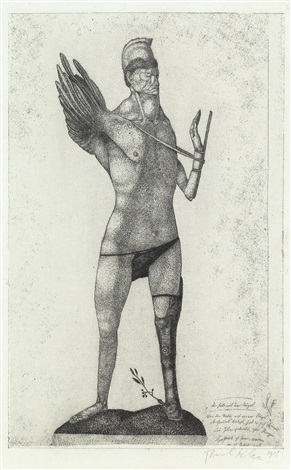
Figure 1. Der Held mit dem Flügel (1905)
Soon after graduating, Paul Klee immersed himself in the Der Blaue Reiter group, founded by painter Wassily Kadinsky in hopes to master color. The group focuses primarily on color and its expressive attributes relating to music and spirituality -a genre that Kadinsky would soon master.
Around 1920, both Klee and Kadinsky taught at the Bauhaus school at the Weimar campus as well as the Dessau campus. Klee would become a major leader in color theory, a topic that he had mastered (see fig 2 &3). His lessons on color theory would later greatly impacting artists of the abstract expressionism movement and color field genre.

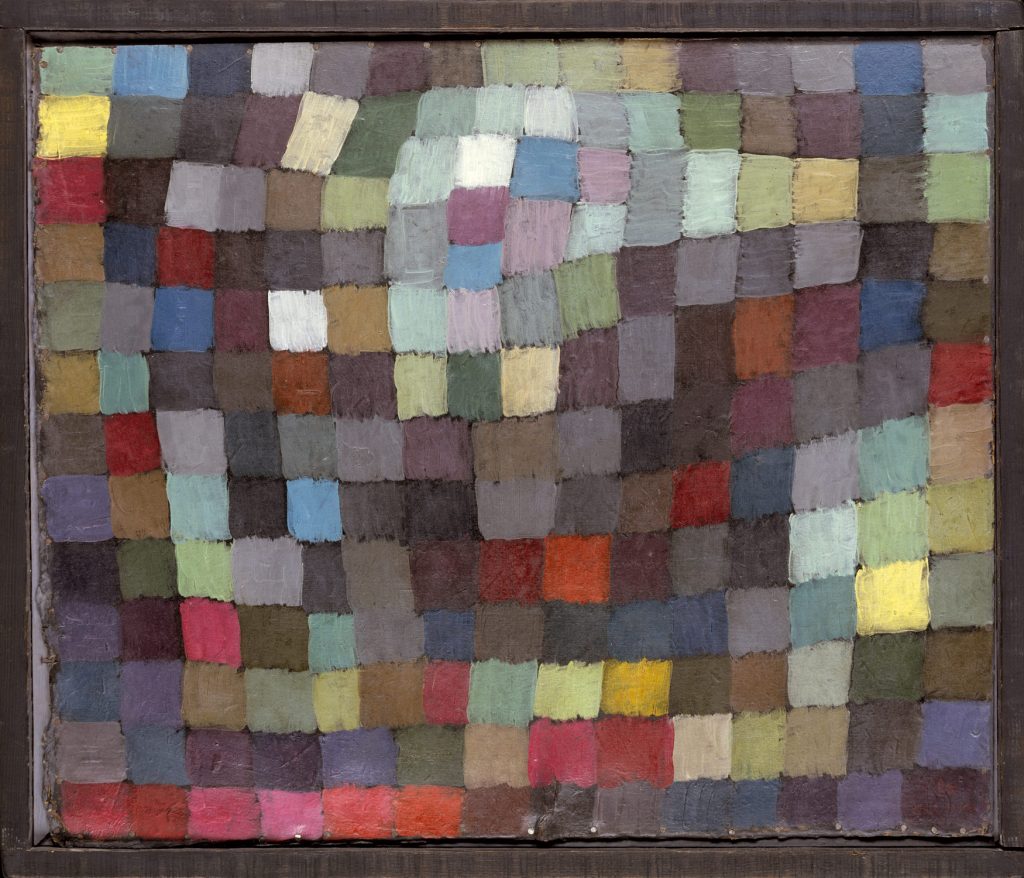
It was during that time where Klee would immerse himself in various genres. His subject matters would range from surrealist portraits (see fig 4) to geometric abstraction (see fig 5), in particular Orphic Abstraction which he became very fond of. However, as inconsistent his style would be, he always focuses on his composition and color tones.
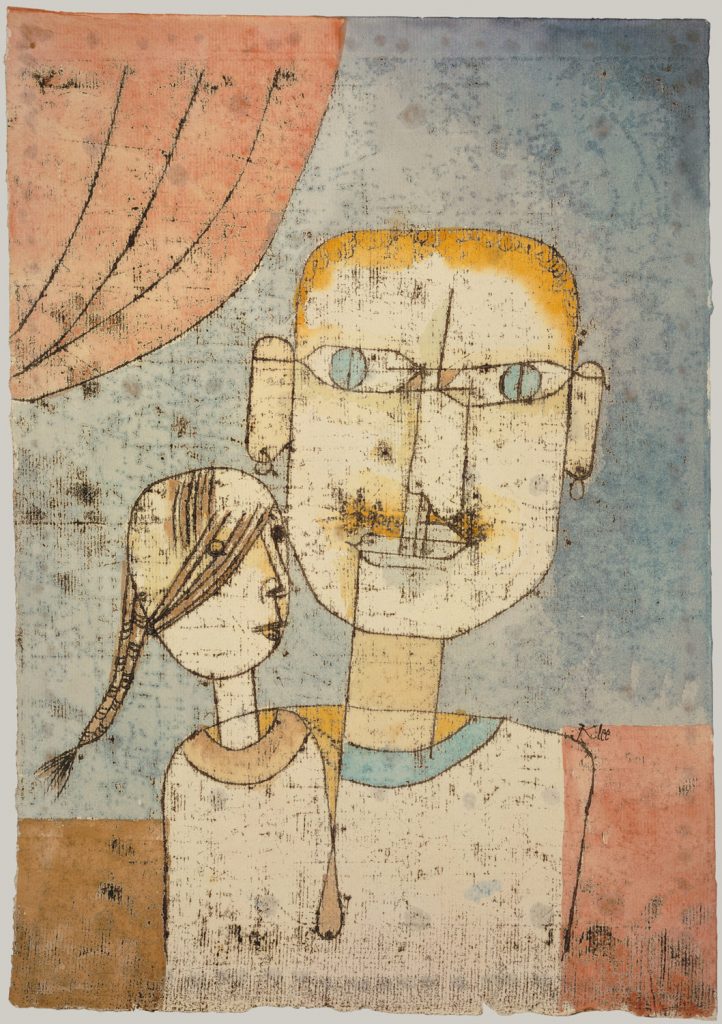
Fig 4. Adam and Little Eve (1921) 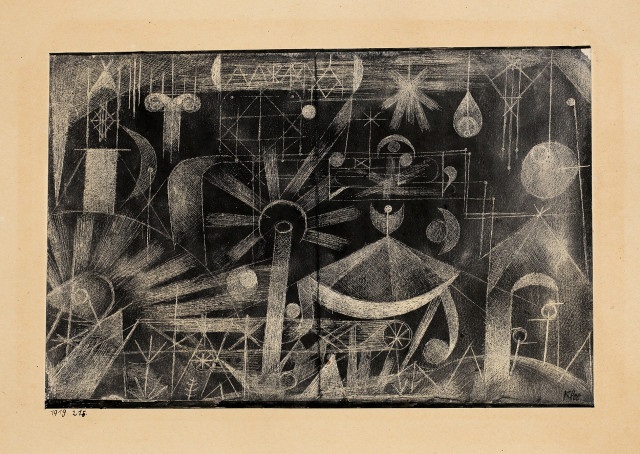
Fig 5.
Nachtmusik – nächtlich-musikalisch
(1919)
He explains “Spacial art does not begin with a poetic mood or idea, (…). But with construction of one or more figures, with the harmonizing of several colors and tones, or with the devaluation of spatial relationships and so on.” (Paul Klee, Artnet)
By 1933, which Hitler achieving power, he was forced to flee Germany and moved back to Switzerland. Despite his absence in the country, his art was still exhibited as degenerate art in the Entartete Kunst exhibition in 1937. During his time in Switzerland, the quality and quantity of his art rapidly diminished due to a mix of poor finance and health. By 1935, he was diagnosed with scleroderma which led to a complete halt of painting. However, by 1937, his health improved and he was able to get back to work. His last pieces before his death in 1940 were heavily influenced by Pablo Picasso. He had simplified many of the refined details present in his previous pieces (see fig.6)
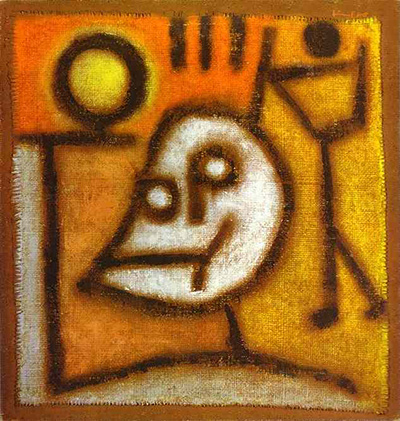
What makes Paul Klee a fascinating artists and one of the most important of the 20th century was because he did not belong to any movement. But for each one he dabbled in, he would show extreme skill and expertise.He also had a huge effect on our present knowledge of colour theory which is a principal in every illustration, painting and design.
Work Cited
Franciscono, Marcel. “Paul Klee.” Encyclopædia Britannica, Encyclopædia Britannica, Inc., 23 Oct. 2019, www.britannica.com/biography/Paul-Klee.
“Paul Klee.” 139 Artworks, Bio & Shows on Artsy, www.artsy.net/artist/paul-klee.
“Paul Klee.” Artnet, www.artnet.com/artists/paul-klee/.
“Paul Klee.” Biography.com, A&E Networks Television, 13 Apr. 2019, www.biography.com/artist/paul-klee.
Rewald, Sabine. “Paul Klee (1879–1940).” Metmuseum.org, Oct. 2004, www.metmuseum.org/toah/hd/klee/hd_klee.htm.
Tate. “Paul Klee 1879-1940.” Tate, 1 Jan. 1970, www.tate.org.uk/art/artists/paul-klee-1417.
Images:
Fig. 1 “Paul Klee.” Artnet, www.artnet.com/artists/paul-klee/.
Fig 2. Rewald, Sabine. “Paul Klee (1879–1940).” Metmuseum.org, Oct. 2004, www.metmuseum.org/toah/hd/klee/hd_klee.htm.
Fig 3. Rewald, Sabine. “Paul Klee (1879–1940).” Metmuseum.org, Oct. 2004, www.metmuseum.org/toah/hd/klee/hd_klee.htm.
Fig 4. Rewald, Sabine. “Paul Klee (1879–1940).” Metmuseum.org, Oct. 2004, www.metmuseum.org/toah/hd/klee/hd_klee.htm.
Fig 5. “Paul Klee.” Artnet, www.artnet.com/artists/paul-klee/.
Fig 6. “Death and Fire.” Paul-Klee, http://www.paul-klee.org/death-and-fire/
